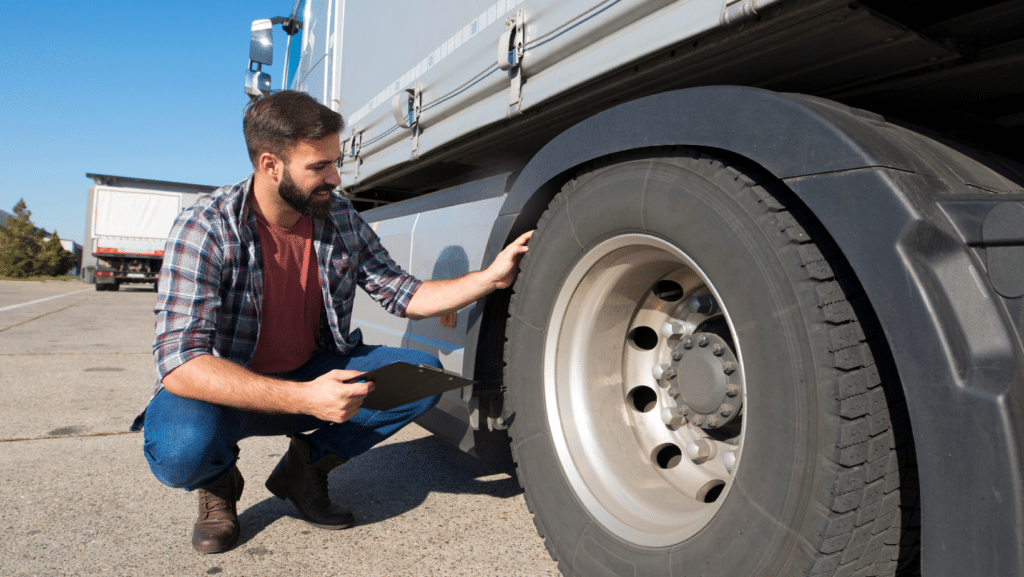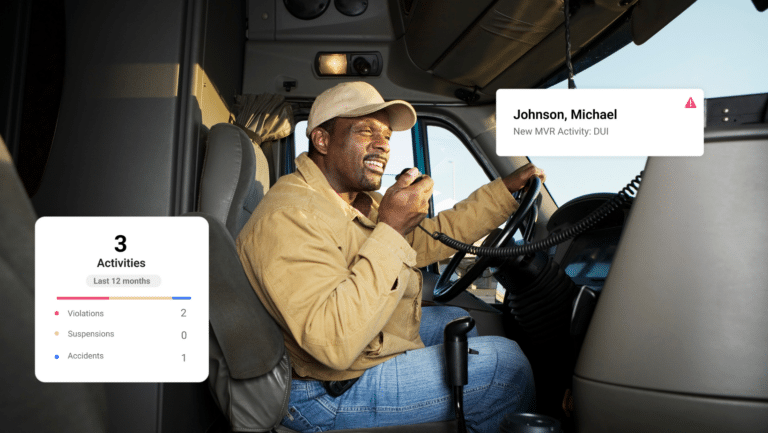2025 CVSA Roadcheck: How to Prepare?

CVSA International Roadcheck 2025 is almost here.
From May 13–15, thousands of commercial vehicles across the U.S., Canada, and Mexico will be pulled over for inspections. Here’s what you need to know to ensure your fleet is prepared.
What is the CVSA Roadcheck?
The International Roadcheck is a joint effort by the U.S., Canada, and Mexico where inspectors check thousands of commercial vehicles over three days. The goal is to ensure safety and regulatory compliance by placing unsafe vehicles and drivers out of service. This year, the CVSA International Roadcheck will be scheduled for May 13th-15th.
2024 Roadcheck Summary
Inspectors conducted 48,761 inspections during last year’s International Roadcheck and recalled 23% of vehicles due to violations related to tire defects, brake failures, and lighting issues.
4.8% of drivers were also removed from service, most commonly for violations such as falsified logs, invalid or expired licenses, and medical certificate issues.
⚠️ Use the data as a reminder. Fleets that prioritize year-round compliance are better equipped to avoid penalties, protect their drivers, and keep operations moving without interruption.
2025 CVSA Roadcheck Focus Areas
This year’s Roadcheck will emphasize two critical areas:
On the vehicle side, inspectors will assess tire condition, tread depth, inflation levels, and overall maintenance. Tire issues are one of the leading causes of out-of-service violations and can contribute to dangerous situations on the road. Proper tire care is essential not only for compliance but also for preventing blowouts and improving fuel efficiency.
On the driver side, inspectors will focus on identifying falsified or inaccurate Records of Duty Status (RODS) in relation to Hours of Service (HOS) compliance. Ensuring drivers are not operating while fatigued remains a top priority for law enforcement.
Inspectors will also check for valid driver’s licenses, medical certificates, and the driver’s status in the Drug and Alcohol Clearinghouse. Seat belt usage and signs of alcohol or drug impairment will also be examined.
How to Prepare For a Smooth Inspection
Here’s how fleets can gear up for a smooth inspection:
- Conduct Pre-Trip Inspections: Review tire pressure, tread depth, and overall tire condition.
- Verify Driver Credentials: Confirm that all required documents, like licenses, medical cards, and RODS, are current and accessible.
- Review Logs for Accuracy: Ensure that hours-of-service logs are up to date and error-free.
- Educate Your Drivers: Conduct a quick safety meeting focused on inspection procedures and how to interact with inspectors.
Preventing Violations Year-Round with MVR Monitoring
Don’t wait for a roadside inspection to expose problems in your fleet. Continuous MVR Monitoring can give you real-time visibility into your drivers’ status, so you can catch issues like license suspensions or violations as they happen.
Moreover, by monitoring driver records and document expirations, you can avoid surprises and ensure only safe drivers are on the road. With accurate, up-to-date records at your fingertips, you can keep your fleet safer, reduce the risk of out-of-service orders, and stay ahead of enforcement. Learn how MVR Monitoring can maximize your fleet’s safety.
*We are not lawyers. Consult with your legal counsel to ensure your processes and procedures meet/ or exceed safety standards and compliance regulations. Please read our legal disclaimer.








